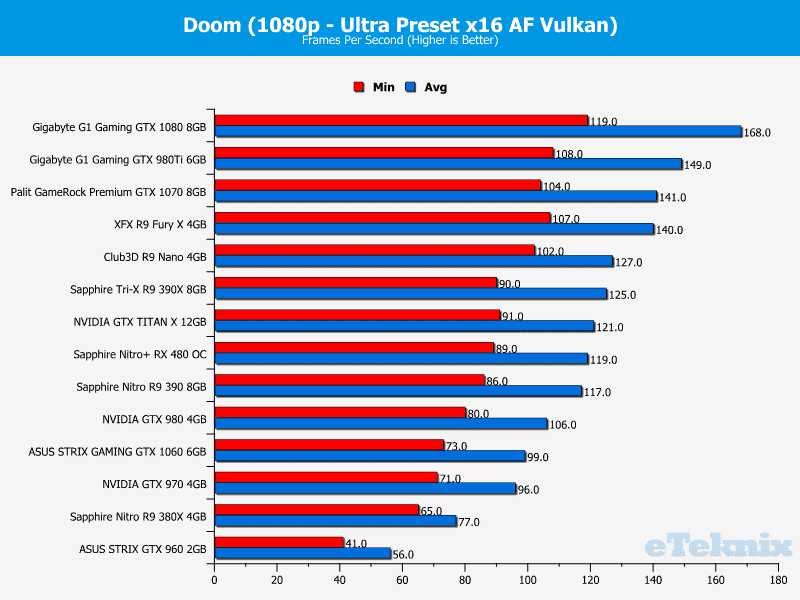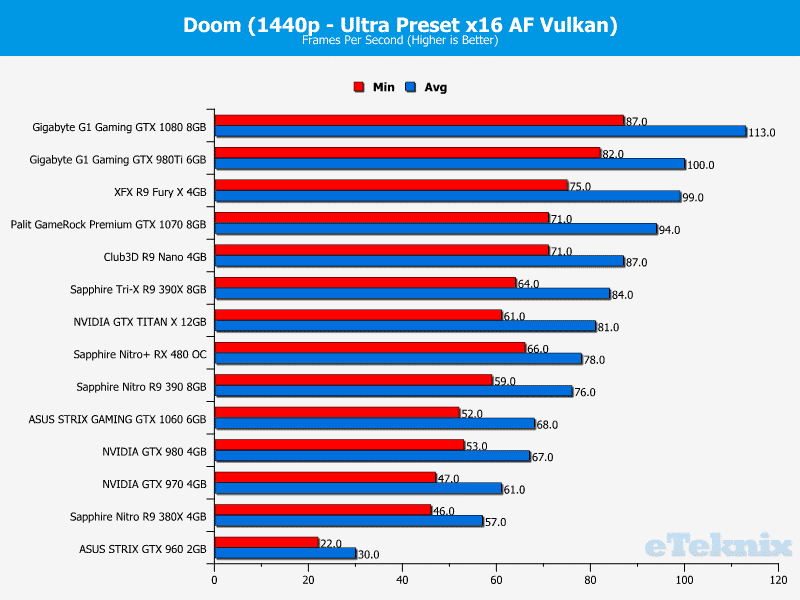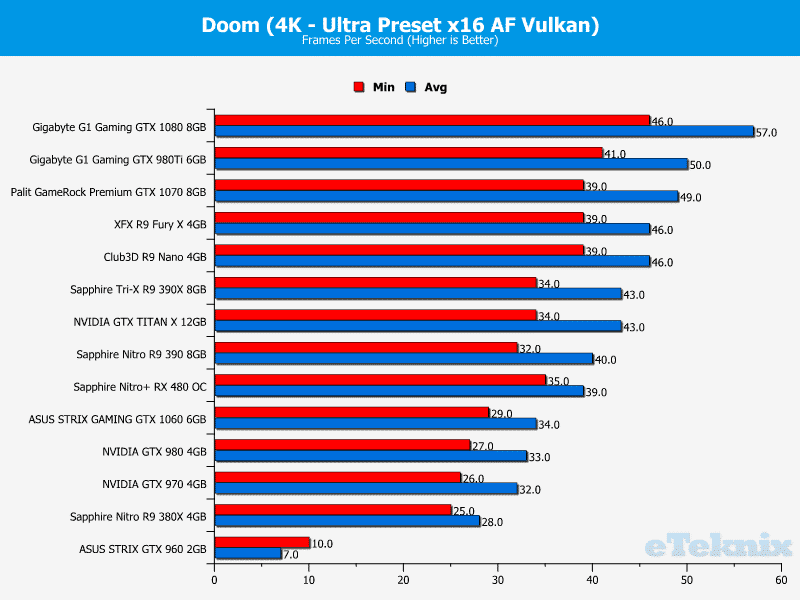Doom OpenGL VS Vulkan Graphics Performance Analysis
John Williamson / 8 years ago
Doom – 1080p, 1440p and 4K Vulkan Benchmarks
Switching the API from OpenGL to Vulkan has a dramatic effect on both the ranking order and frame rates. AMD cards benefit immensely from Vulkan’s lower CPU overheads and become much more competitive. For example, the R9 380X now destroys the ASUS STRIX GTX 960 and maintains a minimum frame-rate above 60. This means the frame-rate appears less jarring and the slight hitching has subsided. Next up is the GTX 970 which posts impressive numbers but falls behind the GTX 1060.
This time, the GTX 980 is easily beaten by the R9 390 and RX 480. Unbelievably, the R9 390X defeats the Titan X in the average frame-rate stakes while being much cheaper. The R9 Nano manages to maintain wonderful performance figures and the Fury X exhibits a massive frame-rate boost which is incredibly close to the GTX 1070. It’s not just improvements for AMD hardware though as the GTX 980Ti and GTX 1080 enjoy higher frame rates when using the Vulkan API.

Throughout the 1440p Vulkan benchmark, AMD products are in their element and I was astounded by the widespread performance gains. The Sapphire Nitro R9 380X achieves almost double the frame-rate of its closest rival and remains within touching distance of the GTX 970. The GTX 980 and GTX 1060 are well behind mid-tier AMD graphics solutions although they can provide a good 60 frames-per-second experience. Once again, the R9 390X outperformed the GTX Titan X which really defies belief.
The R9 Nano’s performance is marvellous and maintains the same minimum frame-rate as the Palit GameRock Premium GTX 1070. Here we can see, the R9 Fury X takes the third spot for the first time and outclasses one of the higher-end Pascal products. The GTX 980Ti and GTX 1080’s benefits are massively reduced and unlike those seen during the 1080p benchmark.

When the resolution is set to 4K, performance gains are practically non-existent on NVIDIA GPUs. This is probably down to many cards being unable to deal with the intense graphical preset and not having the required horsepower to leverage extra frames in Vulkan. While AMD hardware fares better, the advantage when using Vulkan is much less than you’d see in 1440p and 1080p testing. On the other hand, these minor changes are enough to make AMD cards catapult up the list and beat a large number of NVIDIA graphics cards.
The R9 380X performs better and should be able to offer a good frame-rate with lower settings. Also, the RX 480 and R9 390 offer much faster numbers than the GTX 980 which is worthy of praise. The R9 390X performed identically to the Titan X, while the R9 Nano and R9 Fury X couldn’t be separated. As expected, the GTX 1070 edges the R9 Fury X and almost surpasses the GTX 980Ti. The GTX 1080’s performance drops off slightly but it’s not by enough to warrant any concerns.




















